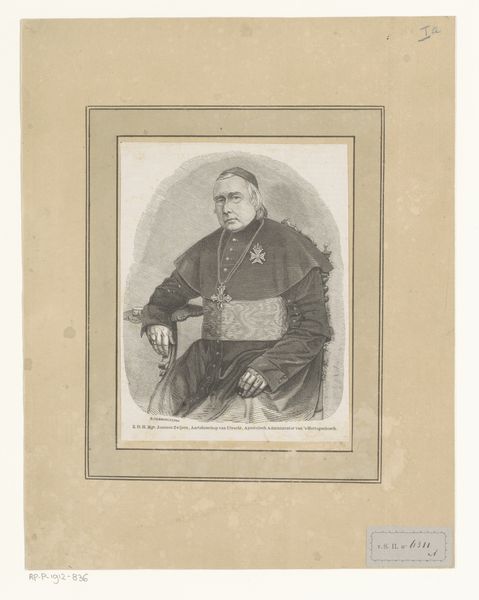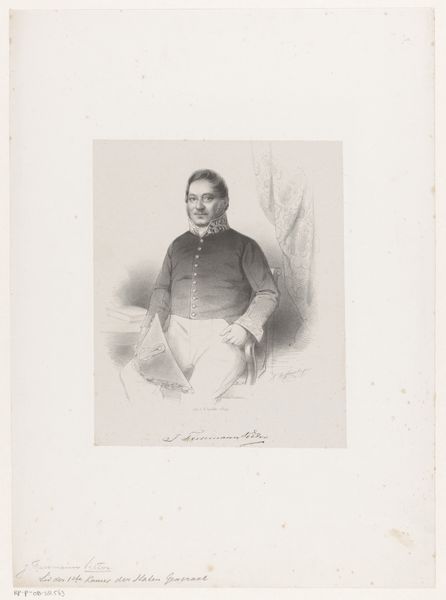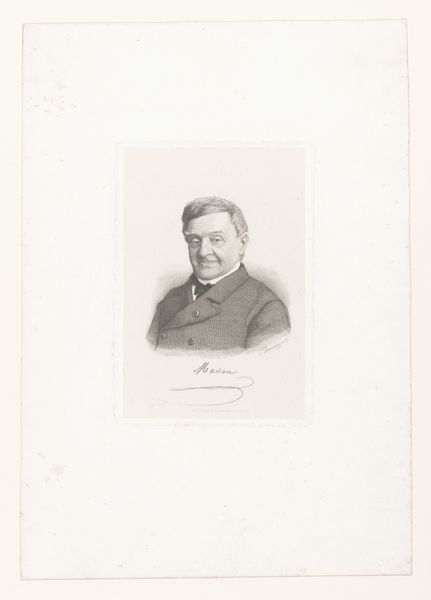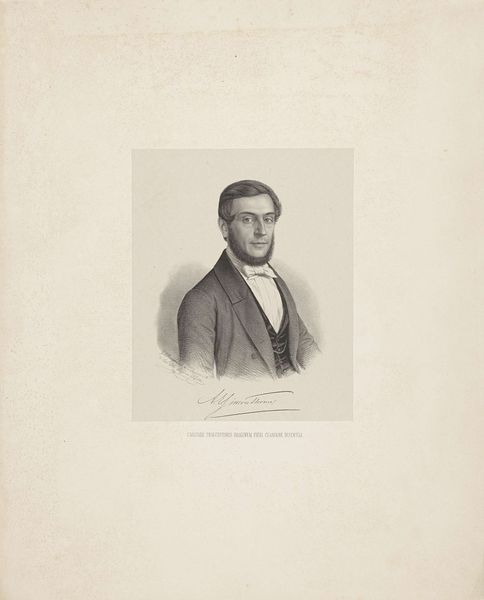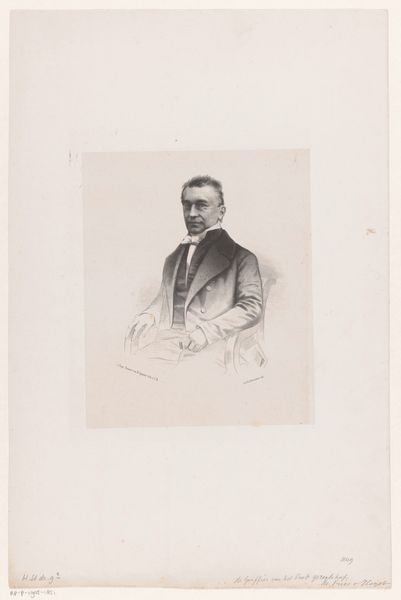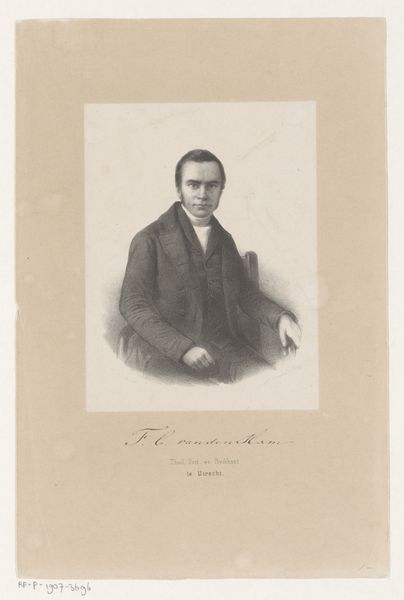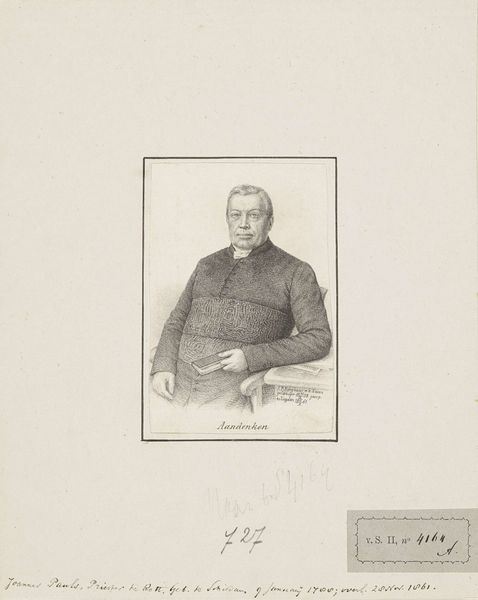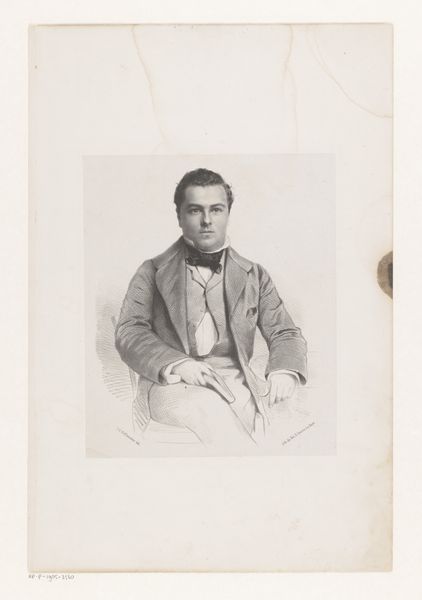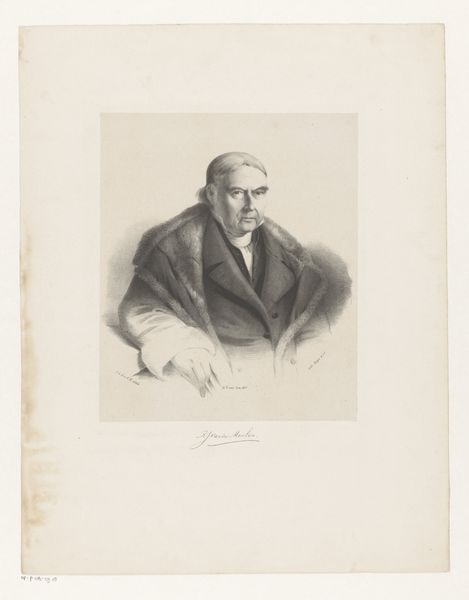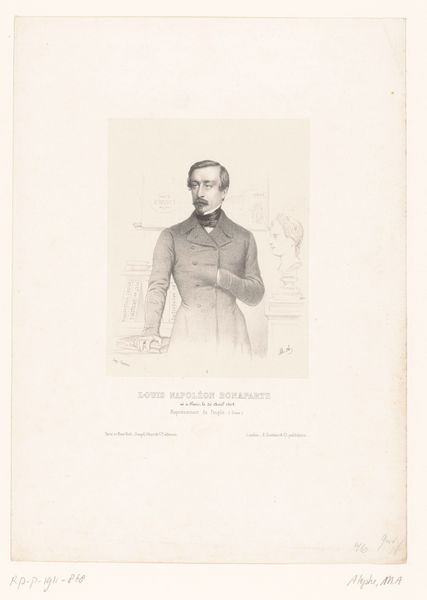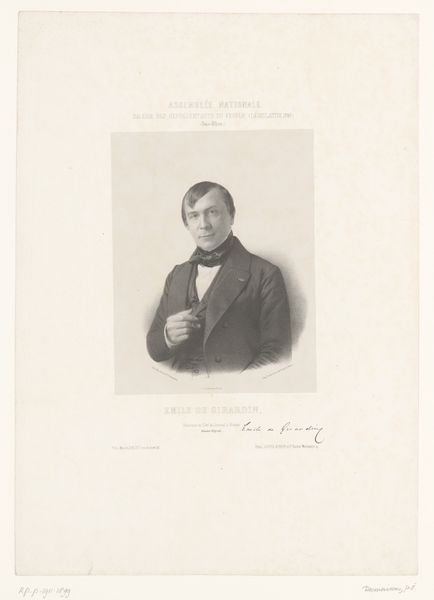
#
portrait
# print
#
history-painting
#
academic-art
#
realism
Dimensions: height 456 mm, width 314 mm
Copyright: Rijks Museum: Open Domain
Curator: Here at the Rijksmuseum we have a lithograph titled, "Portret van Septime Marie Vecchiotti." Created sometime between 1826 and 1895 by Albertus Anthonius Nunnink. Editor: My immediate impression is one of austere authority, emanating from a restrained palette. Curator: Restrained indeed! Nunnink masterfully utilizes light and shadow to create depth. Notice how the crisp lines delineate the contours of Vecchiotti’s face, giving him a noble, almost Roman gravitas. The tight composition keeps our focus solely on his likeness. Editor: Yet, this seriousness raises questions about representation itself. We must consider the function of a portrait like this within the social context of its time. Who was Septime Marie Vecchiotti? Why was it important to memorialize him? Was this commissioned, or an act of personal admiration on the part of the artist? Curator: A good point, because we need to examine how Nunnink visually constructed Vecchiotti’s image. His choice of realistic detail creates a sense of authenticity. See, for example, how he captures the texture of the cassock. We could read that as an intent to document and elevate this individual. Editor: It is impossible to view this outside of considerations of power and privilege inherent in 19th-century society. While Nunnink renders the clothing meticulously, how much agency did Vecchiotti have over the creation and distribution of this image? What might it mean to see oneself flattened and replicated in this way? Curator: By the artist imbuing this figure with solidity and presence, Nunnink compels us to pause and consider the weight of representation, which in turn enhances the formal design and purpose of the lithograph. Editor: Understanding representation reminds us of how images can construct and perpetuate narratives. This challenges viewers to question the implicit assumptions and biases within any representation. Ultimately this is key to a fuller picture of the art, its cultural value and historic period.
Comments
No comments
Be the first to comment and join the conversation on the ultimate creative platform.
